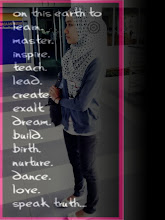 THREE BASIC TYPES OF POTRAITS
THREE BASIC TYPES OF POTRAITSA portrait is a likeness of a person, especially the face. This definition isolates one essential point in portraiture. A portrait should emphasize the person rather than the person's environment or something associated with the person. However, a pictorial representation which portrays only a recognizable likeness of a person is not enough. A portrait must be more than just a photograph. It must have mood, personality, and characteristics from which the viewer can draw conclusions about the subject. By manipulating expressions, posing, lighting, and environments, a portrait photographer can portray any mood from happiness to gloom as well as the personality of a subject. Posing the subject with familiar objects and environments can produce a more natural expression and pose because the subject will be more at ease. Articles or props included in the scene can help to tell more about the subject.
- Types of Portraits
There are three basic types of portraits:
These include: identification, formal, and informal. An identification portrait shows a person as he ordinarily looks.
A formal portrait shows a person to his best advantage, and an informal portrait shows a person as he appears in his natural environment.
Formal Portraits. Some of the uses of formal portraits are for records, formal display, and news release purposes. For example, this is the type of portrait displayed on bulletin boards or elsewhere to recognize accomplishments such as "Soldier of the Month." Formal photographs are also distributed to identify those in the chain of command. It is obvious from their uses that formal portraits should show the person at his best. When taking formal portraits, you should pose the subject in a studio against a neutral background -gray, light blue, or white. The subject should wear class A military dress with full decorations. Any object appearing in the portrait with the subject must be subordinate to the subject in tone, placement, or size.
Informal Portraits. Informal portraits are used for display and promotion in similar but more informal and unofficial circumstances than formal portraits. When you want to indicate the subject's position, job, agency, or a particular event, take an informal portrait.
Environmental portrait, Show the subject of an informal portrait in his natural environment, but do not have him engaged in any activity. The environment serves only as a background to connect the subject with some organization or event. The subject should be dressed properly but not necessarily in a class A uniform. The environmental portrait can be considered as a subcategory of the informal portrait. This type of picture may be classified as a "working portrait." The subject of an environmental portrait is photographed outside of the studio. The purpose of this picture is to show the person in a setting surrounded, perhaps, by props that indicate something about the individu.
These include: identification, formal, and informal. An identification portrait shows a person as he ordinarily looks.
A formal portrait shows a person to his best advantage, and an informal portrait shows a person as he appears in his natural environment.
Formal Portraits. Some of the uses of formal portraits are for records, formal display, and news release purposes. For example, this is the type of portrait displayed on bulletin boards or elsewhere to recognize accomplishments such as "Soldier of the Month." Formal photographs are also distributed to identify those in the chain of command. It is obvious from their uses that formal portraits should show the person at his best. When taking formal portraits, you should pose the subject in a studio against a neutral background -gray, light blue, or white. The subject should wear class A military dress with full decorations. Any object appearing in the portrait with the subject must be subordinate to the subject in tone, placement, or size.
Informal Portraits. Informal portraits are used for display and promotion in similar but more informal and unofficial circumstances than formal portraits. When you want to indicate the subject's position, job, agency, or a particular event, take an informal portrait.
Environmental portrait, Show the subject of an informal portrait in his natural environment, but do not have him engaged in any activity. The environment serves only as a background to connect the subject with some organization or event. The subject should be dressed properly but not necessarily in a class A uniform. The environmental portrait can be considered as a subcategory of the informal portrait. This type of picture may be classified as a "working portrait." The subject of an environmental portrait is photographed outside of the studio. The purpose of this picture is to show the person in a setting surrounded, perhaps, by props that indicate something about the individu.



No comments:
Post a Comment
Note: Only a member of this blog may post a comment.